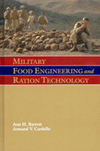Engineering R&D
Removing toxins from edible oils

Perry Alasti, senior vice president & chief technology officer, Artisan Industries

Block diagram (U.S. patent 10,472,589) shows basic process operation of the invention for removing toxins from edible fats and oils.
Image courtesy of Artisan Industries


It sounds simple enough: Remove environmental toxins and simultaneously deodorize edible oils without requiring short-path distillation and its associated significant product loss. Artisan Industries has developed an innovative and simple solution to this problem and been awarded a U.S. patent (No. 10,472,589) for removing toxins from edible fats and oils. The invention relates to industrial-scale food processing by what’s called thin-film stripping.
“This novel patented proprietary technology’s main advantages, for both short-path distillation and thin-film evaporation for physical de-acidification of edible oils, are lower operating temperatures and shorter processing times, enabling treatment of heat-sensitive oils without degradation,” says Perry Alasti, Artisan senior vice president and chief technology officer.
Most edible oils undergo four basic processing steps: refining/neutralization, bleaching, winterization and deodorization. The last step, deodorization, is the removal of free fatty acids (FFAs) to meet residual odor specifications of the final product.
Depending on the type of oil and its intended use, in conventional distillation processes fatty acids are typically reduced to about 2% by weight or less—and more commonly to less than 1%. This is typically accomplished by first degassing at moderate vacuum and about 250°F to eliminate moisture, oxygen and other constituents, heating the oil to stripping temperatures and pumping oil to a deodorizer to remove the odor to acceptable levels. However, most vegetable oils must be held at operating temperatures for 15 to 30 minutes, with direct steam sparge injection in a holding zone to complete the process.
In this final deodorization stage, conventional short path and molecular distillation have been predominantly used in the removal of harmful contaminants, such as PCBs, but since both methods are single-stage processes, product must be passed through a series of these distillation devices, which is costly and inefficient—both in terms of energy consumption and processing time, and potentially causes unwanted quality changes to the product. I asked Alasti to describe his new process and its advantages.
FE: What are short path and molecular distillation?
Perry Alasti: Both technologies are single equilibrium stage unit operations that are not really suitable in stripping applications. Therefore, in order to achieve stringent product quality standards, it may require multiple-passing or utilizing two or more units operating in series to reduce the contaminants to ppb or even ppt levels in certain oils, including possible losses of valuable antioxidants.
FE: Which oils tend to have the most contaminants and why? What are the typical contaminants?
Alasti: Nearly all edible oils, with a few exceptions, have a variety of environmental contaminants at varying concentrations, such as the PCBs and dioxane in marine oils and GEs (glycidyl fatty acid esters) and MCPDs (monochloropropanes, aka chloropropanols) in vegetable oils, predominantly in palm and soybean oil. Refined palm oil has higher concentrations of diacylglycerides (DAGs) than other plant oils, such as soybean oil, which is compounded by higher deodorization temperatures than other edible oils.
FE: What are the issues with conventional steam deodorization in the final refining of edible oils?
Alasti: Conventional steam deodorization is always used in the final refining of edible oils. However, due to their relatively high operating temperatures and long residence times, the process of removing FFA’s and off-flavors (heat bleaching) to produce a “bland oil” results in losses of antioxidants, such as tocopherols and tocotrienols, and more importantly, generation of carcinogens, such as PCBs, dioxins and other harmful environmental contaminants.
FE: What is short-path distillation (SPD) in a nutshell? What is thin-film evaporation?
Alasti: SPDs are vertically oriented, mechanically agitated thin-film evaporators that have internal condensers, which take advantage of the so-called “mean free path” (short distance between the evaporation and condensing surfaces) to allow operation in the micron range of vacuum and minimize collision of vapor molecules to prevent degradation. Thin film evaporators are essentially SPDs without the internal condenser, thus limiting the operating pressure to as low as 1 torr, and typically 2-5 torr. The invention is similar to an SPD, with two major differences: no moving parts and multiple numbers of transfer units.
FE: Could you describe your new process in more detail?
Alasti: Our process uses a multi-staged falling-film stripping column at low operating pressures with steam as a stripping medium to effectively strip the undesirable components. Sort path distillation is a single-stage technology that relies on micron range vacuum to remove undesirable components, whereas our process operates at more moderate vacuum levels, typically between 1 to 5 torr, and uses the “carry effect” of sparge steam to reduce the operating pressure for effective stripping with no moving parts or internal condenser.
FE: Can you summarize the pros and cons of available technologies and your newly patented system?
Alasti: The available technologies, as I mentioned above, take advantage of micron range vacuum and “mean free path” to evaporate any volatile contaminants from edible oils. The main pros are short residence time and reduced operating temperature, and internal condensing to allow operation to as low as 0.001 torr; the cons are significant loss of product and high capital and maintenance cost due to mechanical agitation of the spinning rotor or discs. Our patented process has no moving parts, and therefore, lower capex and opex. The only con might be the potential fouling of the surfaces, requiring more frequent CIP depending on the particular oil and operating conditions.
FE: Is your technology available now?
Alasti: The technology is currently available for both pilot testing and high-volume commercial applications.
FE: How do you integrate your process with existing systems?
Alasti: Our process can be used downstream of the existing deodorizers to remove the contaminants, or be used as a combination deodorizer (FFA removal), and removal of the environmental and process-generated contaminants.
FE: What else should processors know about the system?
Alasti: Whether the process involves vegetable, animal fats and oils, or marine oils, the technology can deodorize the oil at extremely short residence times compared to all commercially available deodorizers. It can also remove high boiling undesirable contaminants, from cholesterol to all types of carcinogens, such as PCBs, GEs and MCPDs, with little to no loss of product. In the case of fish oils, for instance, our process can strip FFAs to the ppm range, and PCBs and dioxins to ppt levels, while “retaining 100% of the omega 3s,” mainly, the DHA and EPA, which are the most valuable components in marine oils.
For more information, visit www.artisanind.com, www.jetvactechnologies.com
Looking for a reprint of this article?
From high-res PDFs to custom plaques, order your copy today!











